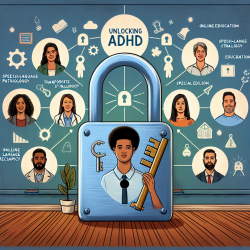Introduction
In the ever-evolving landscape of education and prevention, the integration of evidence-based practices is essential for addressing critical issues such as substance abuse among high school students. The NARCONON™ drug education curriculum, as detailed in the research article "The NARCONON™ drug education curriculum for high school students: A non-randomized, controlled prevention trial," offers valuable insights into effective strategies for reducing drug use and altering perceptions among youth.
Understanding the NARCONON™ Curriculum
The NARCONON™ program is built on a foundation of substance abuse etiology, prevention theory, and best practices. It consists of an eight-module curriculum designed to educate high school students on the risks and realities of drug use. This curriculum addresses various substances, including tobacco, alcohol, marijuana, and harder drugs, through interactive sessions that combine scientific information with skill-building activities.
Key Findings from the Research
The study involved approximately 1000 high school students from Oklahoma and Hawai'i, who were surveyed at three intervals: baseline, one month, and six months post-intervention. The results indicated significant reductions in drug use among students who participated in the NARCONON™ program compared to those in the control group. The most notable decreases were observed in tobacco and marijuana use, followed by alcohol and amphetamines.
Implementing the Curriculum: Practical Insights
For practitioners looking to enhance their drug education programs, the NARCONON™ curriculum provides a robust framework. Here are some practical steps to consider:
- Engage Students with Interactive Sessions: Incorporate activities that promote active participation, such as group discussions, role-playing, and personal reflection exercises. These methods enhance comprehension and retention of information.
- Focus on Skill Development: Equip students with the skills to resist peer pressure, recognize media influences, and make informed decisions. The curriculum's emphasis on social influence skills is crucial for fostering resilience.
- Utilize Evidence-Based Content: Ensure that the information presented is grounded in scientific research and addresses common misconceptions about drugs. This approach builds credibility and trust among students.
- Encourage Parental Involvement: Assign take-home activities that involve discussions with parents, fostering a supportive environment for students to explore their beliefs and attitudes about drugs.
Encouraging Further Research
While the NARCONON™ curriculum has demonstrated efficacy in reducing drug use, ongoing research is essential to refine and adapt prevention strategies. Practitioners are encouraged to explore additional studies and contribute to the growing body of knowledge on drug education. By staying informed and engaged, educators can continue to make a meaningful impact on the lives of students.
Conclusion
The NARCONON™ drug education curriculum offers a comprehensive approach to preventing substance abuse among high school students. By implementing its evidence-based strategies, practitioners can enhance their programs and contribute to a healthier, drug-free future for youth. To read the original research paper, please follow this link: The NARCONON™ drug education curriculum for high school students: A non-randomized, controlled prevention trial.










